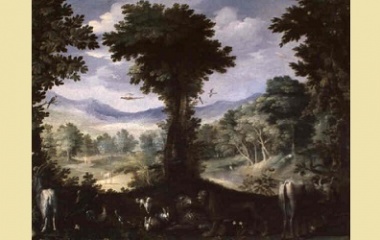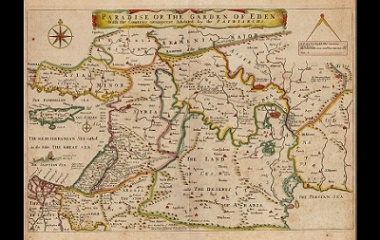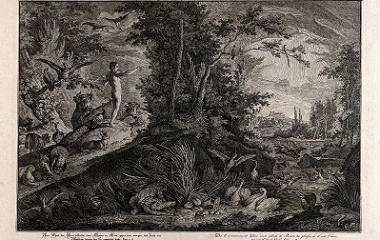Adam and Eve, innocent of sin, frolicked naked in a heavenly garden, until one day they chose to be tempted by a cunning serpent. Cast out of their home in paradise, they found themselves in a land of death, disease and suffering, otherwise known as Earth.
What Is the Garden of Eden?
In Christian theology, the Garden of Eden is the paradise where Adam and Eve, the first man and woman created by God, lived. The term comes from the Hebrew word Gan Eden originally. In the bible, in Genesis, the garden is described as having temperate weather with no rain, lush trees and gushing rivers. The word paradise is frequently associated with the garden and originally meant a hunting-park or royal garden. The word has Greek and Iranian origins.
Location
Genesis reveals the location of the paradise as situated between four rivers: the Gihon, Pishon, Euphrates and Tigris. The Garden of Eden is located in the eastern region of Eden, implying that Eden itself is a region, which the garden is a part of. The popular belief among scholars, however, is that the Garden of Eden is mythological and has no physical location.
In 1881, a Christian cosmologist and explorer, General Charles Gordon, visited a group of islands, which matched the description of the Garden of Eden. The fertile islands he discovered are known today as the Seychelles. The island of Valle de Mai was believed to house the tree of knowledge of good and evil, according to Gordon. Gordon was a slightly atypical Christian, however. He believed in reincarnation, denied the existence of the free-will of man and was alleged to be homosexual.
Banishment from the Garden
The bible mentions the story of Adam and Eve and the tree of the knowledge of good and evil. Adam and Eve were permitted to eat anything in the garden, except the fruit of the tree of knowledge of good and evil. A snake, unfortunately, was able to tempt Eve to eat the fruit from the forbidden tree, resulting in God then throwing Adam and Eve out of the garden paradise.
In Other Religions
In Judaism, scholars offer two versions of the Garden of Eden. One is called Lower Gan Eden and refers to a physical place. The second version is related to an ethereal concept rather than a physical one and is called the Higher Gan Eden. The second paradise is said to appear at the end of the world. A similar concept exists in rabbinic literature and is called Olam Ha Ba. This refers to a utopian place where souls go after death in the Messianic Age, a time of peace and a heavenly state on Earth.
The Garden of Eden is mentioned is Islam and is said to be where the righteous will find themselves after they die. The Quran mentions Adam and Eve’s banishment from the paradise and the devil or Iblis that tempts them. According to some sources, Allah turns the Iblis into Satan. The Quran only mentions the existence of the tree of immortality, and no other trees in the garden.
According to the Latter-day Saints, Adam and Eve relocated to a place called Adam-ondi-Ahman after their banishment from the garden. Followers suggest the location is in fact situated today in Missouri!
Original Sin
When Adam and Eve committed the original sin of eating the forbidden fruit, all of mankind was damned to an eternal collective punishment. We are all therefore guilty of their sin, and are born as sinners. Authors who oppose the Christian viewpoint conclude that humankind is being punished for a sin committed by someone else. Adam and Eve were also allegedly unaware that they were doing anything wrong by trusting the serpent. Can it truly be considered a wrongdoing if they did not understand why the act was wrong? By similar conflicting rationale, Eve was blamed for the sin and thereafter all women were labelled as inferior. For centuries thereafter women have been bound to follow men rather than allowed to take the lead.
Perhaps, in an attempt to explain the fallibility of mankind, the illustration of Adam and Eve, and the Garden of Eden came into existence. The story does, however, also imply that humankind is in fact all one family. If we are indeed one family, we should perhaps take a look at our prejudices of classicism, racism, sexism and religious divide and consider the contrary viewpoint of co-operation, acceptance, and tolerance, much like the Rastafarian concept of one love!










